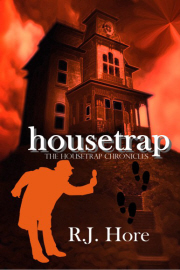Welcome back to Storybuilder Inc.
For those just joining, I am both a writer and an editor and have compiled this series both by utilizing various principles of storytelling craft learned from other writers and professionals in the industry, and from techniques I use in my own practice. I do my best to make it accessible and adaptable for other writing styles, i.e. intuitive vs. planning.
I cover everything from the initial premise to the final, polished draft. Last time, I covered 5 advanced principles to help as you use your revision outline from step 11 to adjust your manuscript so it matches the kernel of your story. This week I will talk about 5 final, very advanced principles of pre-polishing revision.
For a complete guide of all Storybuilder steps, including a list of posts to come, CLICK HERE.
>>>>>>>>>>>>>>>>>>>>>>>>>>>
Tip 1: Discover characters’ fourth dimensions and world-building under-story
Are your primary characters three-dimensional? Time to make them four-dimensional. Are you secondary characters two-dimensional? Now it’s time to get to know them as well as you knew your primary characters before you started telling your story. Tertiary characters, those ones who make a quick appearance, will also get a promotion—at least, some of them. Pick those tertiary characters who stood out more than expected in the manuscript and make them more that one-dimensional. The ones who stay one-dimensional, those extras in the crowd, can now be called quaternary characters for the distinction. Go on, rewrite all your profiles and label accordingly.
What about settings? You drew them out, made some notes. But your story went on and maybe you forgot to write down the details. Now it’s time to organize and get them down. And all those details with your world need organizing too. If you write speculative fiction, then you might need to make profiles for nations, cultures, peoples, religions, languages, or groups. You might need a chronology to deal with the history behind the world as it’s come together. Do that too. Develop a system and keep it organized.
Do you see the point I’m getting at and how it relates to the idea behind this tip? So far, we’ve just been looking at the story in each sub-frame and how to make revisions without losing perspective. Now the goal is to comb over your sub-frames, look at the world-building behind them, and see how you can coherently organize your notes to make sure everything’s consistent.
Contradictions in story occur because we lose perspective of what is actually going on. After all, writing a story involves lots of juggling. At the same time, getting carried away with profiling to make sure you understand all the inner workings can pull you away from the germ of the story, leading to a manuscript that reads as an attempt to Frankenstein a bunch of disjoint creative blocks.
In Step 4 I mentioned basic techniques to keep your world-building together and in control. (In fact, I will be following Storybuilder Inc. with a companion series on this process.) Now, after the writing is done, it is most appropriate to take the time and build to your heart’s content. It will give you more perspective, which is exactly what you want.
Focus, in particular, on character, since character motives are the essence of story and the conflict that defines it. Go deeper than just knowing all the levels of your primary characters—wear their skin, see into their soul. If they’re burned, feel that burn, if they weep, you should be weeping too, if they are depressed, get ready to see the doctor for some antidepressants. Wear black if they like black, or spend hours in a garden or conservatory if your heroine is a gardener in a land of eternal spring. Think of yourself like a movie actress (or actor) getting into character, and go so far as to talk like your primary characters, walk like them, even think like them while you’re trying to discover this fourth dimension of their character. The story you tell is their story and the only way it will be believable is if you believe it—and that means you must live it. That’s a four-dimensional character, and even if it drives you a bit crazy, well…there’s a price to pay for prose that truly are alive.
There’s also the lesser players who knit together the subplots. Contradictions and plot holes abound when secondary characters are little more than two-dimensional jigsaw pieces. You know a bit of their back-story, their motives and goals, but not much more. Make them more than a wind-up toy that spins and somersaults. Now, you don’t want them to be three-dimensional in the story, because otherwise your narrative will be over-saturated with meaningless info-dumps, but those characters do need to become three-dimensional to you, their creator, and he perfect time for this is the point where the story is told and you want to get to the bottom of why everyone is doing the things they’re doing. Look this little bit deeper, and see if the story your wrote is in line with it. If not, make a slight adjustment to make it true.
Last, those tertiary guys and gals. Every piece of your story must be meaningful. And so everyone who occupies more than a few sentences should be as well. Convince yourself that their presence passes this test, and, to do so, make them two-dimensional on paper so that, when they speak, walk, or are observed by your protagonists from a distance, you’ll understand their significance.
An example:
A bearded man walking across the town square now is an unemployed lumberjack whose wife wants him to find work as a blacksmith, and he’s storming across the town square because he hates the thought of it. His lip is curled, his shoulders are hunched, and he’s cursing the Goddess of Thunder. And this is perfect, since he does this during the chapter with emphasis on misdirection and free choice. Furthermore, the otherwise sunny day I picked now will change to foggy and overcast, making the primary character uncomfortable and on edge. See how a bit of knowledge of a tertiary character’s second dimension can enhance a scene, change the tone and mood, and send a ripple across the manuscript? Do this with every tertiary character you can think of, using the slightest brush stroke, and watch your story come to life. (And I’ll assume you all are familiar with writing’s number one rule: show, don’t tell!)
You’ll find that probing characters deeper will open up setting and world details too. If you are writing a story set in the real world, then you might profile relevant groups based on your research if, for example, you find out your character was a former spy for an organization called the Black Bells. Let all the layers build and add up, and tweak your story accordingly (or make notes where you’re not sure so you can address it all during the polishing to ensue).
Tip 2: Clear all your lists
Revision, like drafting, is organic. That means, although I’m detailing various tips to reflect five different levels of complexity, in truth the order you tackle things will be as unpredictable as the creative process itself. Outlining—true outlining—after all, is not about laying down all the boundaries and limiting your creative freedom. It’s the exact opposite, in fact. It’s about become freer because of the confidence you have in a directive process that will yield a story fleshed out to its fullest.
Either way, before you move on to polishing—the step where you will take all the notes and revision strategies and produce something ready for an editor’s eye—make sure you deal with everything on your list. Cold read notes, alpha reader notes, or another list that grew when you started the revision process. Don’t jump the gun, no matter how tempting that is, because otherwise you’re going to run in circles and end up with a story you knew could have been better, if only you’d waited. If your publisher or agent is pestering you, then ask for more time. If there’s a deadline, then throw everything distracting aside, lock yourself in a room, and ask your friends and family for forgiveness. Do what it takes, but whatever you do, don’t cut corners; leave no stone unturned and you will have the best polishing experience possible, and, most importantly, happy readers when your book is in print.
Tip 3: Good bookkeeping
Your manuscript is going to look like a dog’s breakfast. It will consist of the neat, well-thought-out words you put together during drafting, and the looser, boxed-in notes, offset with various anchors you’ve dropped in during revision. Once you get through all your revision check-lists and have treated every sub-frame and given it the considerations of the various levels of Tip 1, go over your manuscript and read these notes. See if you can clean them up a bit, or put them together. (In the process, you may generate a creative spark or two—it’s fine to fix up your manuscript during revision, just as long as you avoid getting pulled into linear revision.)
If you’re a multiple drafter and more of an intuitive writer (i.e. a “seat-of-your-pantser”), then this corresponds to exactly what you do, but with notes inserted as you run over your drafts, rather than just changing the manuscript each time until it happens to work out.
(Quick fact: intuitive writers often write many drafts, up to twenty, as a process of discovering their story. These stories often abound in surprises and twists that outline-based drafts lack. However, I will again emphasize that the Storybuilder model is neither of the two. There is no “formula” for writing a great story. However, there are steps you can follow to help as you creatively discover how to create your own unique cosmos. Revision, whether you are an outline writer or an intuitive writer, is as much an opportunity to introduce twists, surprises, and new layers to your story as in drafting.)
Tip 4: Embrace unpredictability
Since your story’s true existence is abstract and your true work involves careful thought that far exceeds the time you spend crafting its prose, this means the storytelling process itself can be very unpredictable. As much as you might want to control it, the truth is it will take you for as many twists and turns as the story itself (perhaps more).
The goal of the revision model I’m presenting is to allow you to embrace this process. Rather than forcing on story layers and changes without a sense of their effectiveness, you have an opportunity to write in an intermediate medium. In much the same way computer programmers write in pseudo-code to break down a problem before investing too much energy in implementing thousands of lines of code, so too a writer can learn to write in “pseudo-story”, looser sketches of the story in question without investment in a particular course of prose. Just as a problem-solver uses these looser forms of notation to assist as a focus for thought, so too a writer can feel his or her way to the essence of their story before taking out the brush and sweeping every grain of dirt from its stones.
Tip 5: Kill your darlings, but believe in resurrection
It might seem intuitive to keep the strongest passages of your story and clear away the weaker ones. This, in general is true. But sometimes it’s wise to go to the parts you feel the strongest about and decide they need to be better.
You’ve heard the expression, “Kill your darlings.” Why do we do this? Not because fiction, as a rule, shouldn’t contain anything profound. It’s something deeper:
If you wrote something worth keeping, then it’s not the words, but what the words do, that is worth keeping. So, go to a part you love. Think about it, reflect, then make the decision to tear or apart. Tear it apart and make it better. What will come back will be something different (though it sometimes will be similar). In its resurrected form, it will be there because you connected with what is happening in your story. You connect with why, and the process of writing itself, and in so doing detach from enamor over having written.
I’ve used the image of layers of an onion, or a snake shedding its skin. Also, metamorphosis. Layer upon layer, your goal is to strip your prose down until the diamond and gold and nameless precious gems of your story are naked and gleaming for your reader to see. You’ll break them free during revision, then make them smooth, shiny, and well-wrought during the final polish.
It ends with polishing
Some of you have heard the word “polishing”. Perhaps it was from an agent or an editor who said, “It must be polished before you submit it.” The word itself makes me think of continuous rubbing and smoothing off all rough edges. It’s easy to think this means you just have to write a story then keep going over it again and again. Hence, linear revision, which is, for most, a trap.
I’ve tried to break revision and polishing into separate pieces, and hope this helps you highlight strategies to make the overall process productive. “Keep going over your manuscript until it’s perfect” is not specific at all, and is very unhelpful. Good goals are concrete and specific (like good stories).
Next week, I will detail more techniques, ones that will give you detailed, measurable steps to make sure that “continuous rubbing” leads to a finished story.
Graeme Brown has been writing epic fantasy since he was a child and continues to develop his stories every day. He is the author of The Pact and is an editor for Champagne Books.
Follow his blog for updates:













































